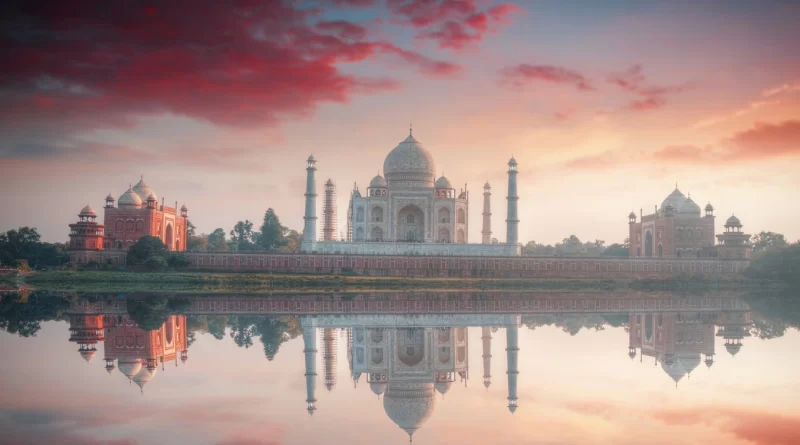Exploring the Timeless Beauty: A Journey Through the Taj Mahal
The Taj Mahal, a name that resonates with grandeur, romance, and architectural brilliance, is a testament to the power of love and human creativity. Located in Agra, India, this iconic monument has captured the hearts and imaginations of people from all over the world. Join us on a virtual tour of the Taj Mahal and discover the timeless beauty and captivating history that have made it a UNESCO World Heritage Site and one of the Seven Wonders of the World.
The Origins of the Taj Mahal
The Taj Mahal’s story is one of love and devotion. It was built by the Mughal Emperor Shah Jahan in memory of his beloved wife, Mumtaz Mahal, who died during childbirth in 1631. The emperor’s grief was immeasurable, and he resolved to build a mausoleum that would be a symbol of their eternal love.
Architectural Marvel
The Taj Mahal is often described as a masterpiece of Mughal architecture. It combines elements from Persian, Indian, and Islamic architectural styles, resulting in a harmonious and breathtaking structure. The main building is made of white marble adorned with intricate carvings and inlays of semi-precious stones, creating a mesmerizing play of light and shadow.
The Gardens and Surroundings
The Taj Mahal is not just a solitary monument; it’s a complex surrounded by lush gardens and various other structures. The Charbagh, or Mughal garden, is a classic representation of paradise on Earth, divided into four equal parts with water channels and pathways. Beyond the garden lies the Yamuna River, providing a picturesque backdrop to the monument.
The Inlay Work
The Taj Mahal’s beauty lies in its meticulous details. The inlay work on the marble is nothing short of extraordinary. Skilled artisans used precious and semi-precious stones like lapis lazuli, jasper, and turquoise to create intricate floral and geometric patterns. The result is a shimmering mosaic that seems to change color with the shifting sunlight.
The Calligraphy
The Taj Mahal is adorned with Quranic inscriptions and calligraphy, adding an element of spirituality to its grandeur. The passages from the Quran convey the message of eternal life and divine paradise, aligning with the monument’s purpose as a mausoleum.
The Changing Hues
One of the remarkable features of the Taj Mahal is how it appears to change colors throughout the day. From the soft pinkish hue at sunrise to the brilliant white under the midday sun and the ethereal glow at moonlight, the Taj Mahal’s ever-changing appearance adds to its mystique.
Visiting the Taj Mahal
Visiting the Taj Mahal is a journey to another time and a celebration of human creativity and love. To make the most of your visit, consider the following tips:
- Timings: The Taj Mahal is open from sunrise to sunset, except on Fridays.
- Dress Code: Modest attire is recommended out of respect for the site’s cultural significance.
- Tickets: Tickets can be purchased online or at the entrance gate.
- Security: Security measures are in place, so be prepared for bag checks.
In Conclusion
The Taj Mahal’s enduring beauty and cultural significance have made it a must-visit destination for travelers around the world. It stands as a symbol of love, artistic achievement, and architectural brilliance. Whether you visit in person or explore it through the pages of a book or the pixels of a screen, the Taj Mahal is an experience that leaves an indelible mark on the soul, a timeless treasure of human history and passion.
Experience the splendor on our one-day tour to Taj Mahal. Immerse yourself in its breathtaking beauty and rich history with our expert guides. Book your unforgettable journey today!
